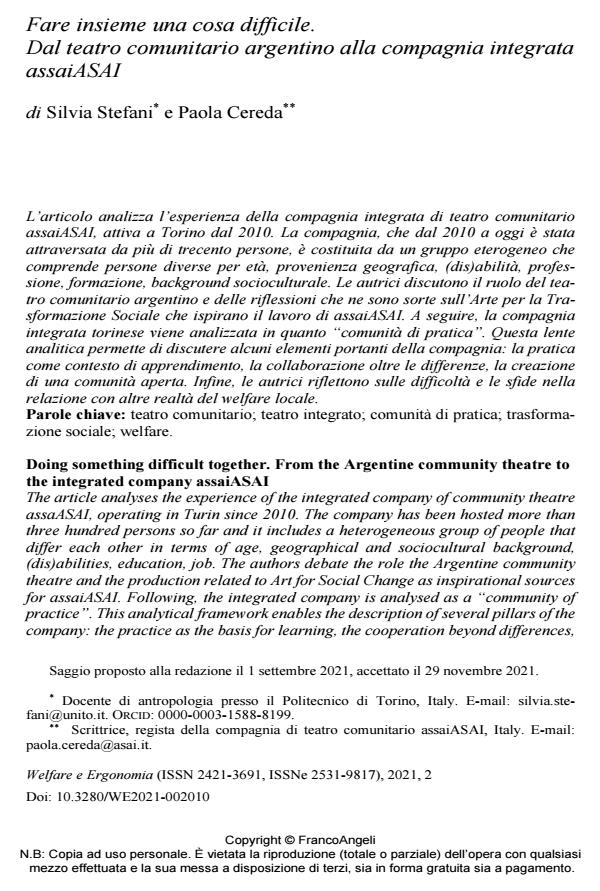Doing something difficult together. From the Argentine community theatre to the integrated company assaiASAI
Journal title WELFARE E ERGONOMIA
Author/s Silvia Stefani, Paola Cereda
Publishing Year 2022 Issue 2021/2
Language Italian Pages 13 P. 133-145 File size 222 KB
DOI 10.3280/WE2021-002010
DOI is like a bar code for intellectual property: to have more infomation
click here
Below, you can see the article first page
If you want to buy this article in PDF format, you can do it, following the instructions to buy download credits

FrancoAngeli is member of Publishers International Linking Association, Inc (PILA), a not-for-profit association which run the CrossRef service enabling links to and from online scholarly content.
The article analyses the experience of the integrated company of community theatre assaASAI, operating in Turin since 2010. The company has been hosted more than three hundred persons so far and it includes a heterogeneous group of people that differ each other in terms of age, geographical and sociocultural background, (dis)abilities, education, job. The authors debate the role the Argentine community theatre and the production related to Art for Social Change as inspirational sources for assaiASAI. Following, the integrated company is analysed as a "community of practice". This analytical framework enables the description of several pillars of the company: the practice as the basis for learning, the cooperation beyond differences, the creation of an open community. Finally, challenges and struggles in the relations of assaiASAI with other welfare entities will be discussed.
Keywords: community theatre; integrated theatre; community of practice; social transformation; welfare.
Silvia Stefani, Paola Cereda, Fare insieme una cosa difficile. Dal teatro comunitario argentino alla compagnia integrata assaiASAI in "WELFARE E ERGONOMIA" 2/2021, pp 133-145, DOI: 10.3280/WE2021-002010